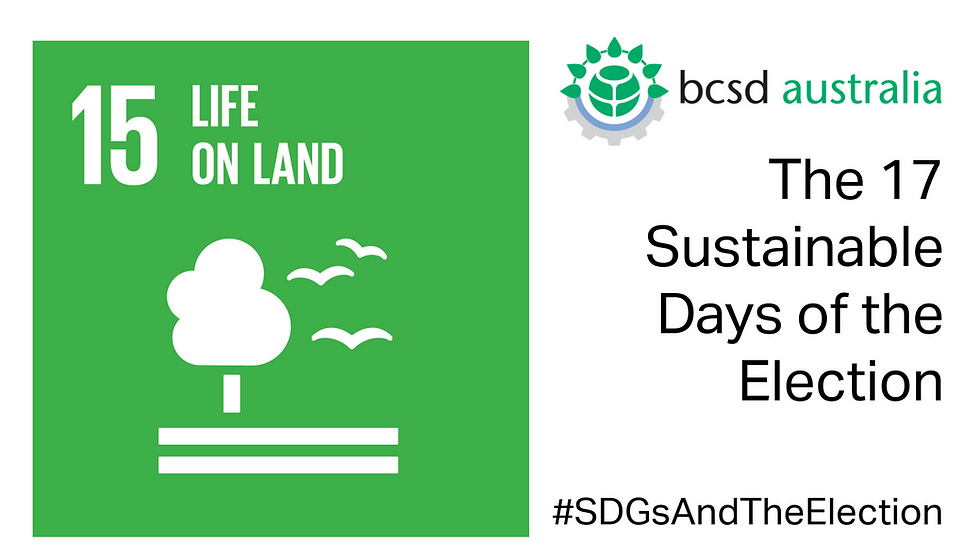SDG9: The 17 Sustainable Days of the Election
- BCSD Australia
- May 9, 2019
- 2 min read
Updated: May 27, 2019
Through the lens of the UN Sustainable Development Goals (SDGs), over the 17 days leading up to the Australia’s national election we will be highlighting the challenge for an inclusive and sustainable Australia, what can be done to address the challenge and what BCSD Australia, as part of a global WBCSD network is doing to create impact.
On Day 9, we are looking at SDG9: Industry, innovation and infrastructure

There has been limited diversification of Australia’s economy over the past 15 years, the sophistication of which has subsequently gone backwards with investment in knowledge-based capital and support for collaboration being well below that of other more innovative nations.
It is critical that we prepare our people, businesses and organisations for the impacts of automation, robotics, the Internet of Things (IoT), big data and collective intelligence. However, thus far, investment in research and development and in knowledge-based capital by Australian businesses has been lower than in many developed nations, largely because policy has not moved from business tax incentives towards more effective support for collaboration.
On infrastructure investment, Australia suffers from poor planning and a lack of strategic prioritisation. There is no clear link between infrastructure investment and the patterns of economic and population growth across Australia. Australia’s cities and regions pay the price in congestion, limited access to services and jobs, and loss of amenity. Women in science and engineering is also low compared to international comparators, while patent filings (a measure of country innovation) is one of the lowest in the OECD.
A number of actions are needed to stimulate high quality investment in Australia's industry, infrastructure, and innovation:
Establish a ‘green stimulus plan’ which could include a list of significant properly costed environmental infrastructure projects (drought resilience and preparation, environmental restoration, affordable low- energy public housing, public transport) evaluated by Infrastructure Australia and ‘shovel-ready’ to implement. These projects would be designed to stimulate demand but also have a social return.
Recalibrate the systematic risk of infrastructure projects to more accurately reflect the social and environmental returns to the economy of publicly funded infrastructure.
Develop a new governance structure for the approval of mega projects so that the Australian community has a greater ‘buy-in’ to those projects.
Government needs to have a stronger and more vocal voice in global innovation trends.
Democratise access to the internet to reduce gaps in access by income level.
Leverage the decarbonisation process that will inevitably be required to take place to occur not only in sectors with a high material footprint such as primary resources, but across the board.
Develop nationally co-orientated and regionally oriented programs to pull people, places and sectors into innovative, higher-value activities.
What is BCSD Australia doing to create impact to address these challenges?
We are working with a number of partner organisations on projects that will help to address this challenge here in Australia and around the world, including:
Follow us on Twitter and LinkedIn to see our latest posts on #SDGsAndTheElection each day.




Comments